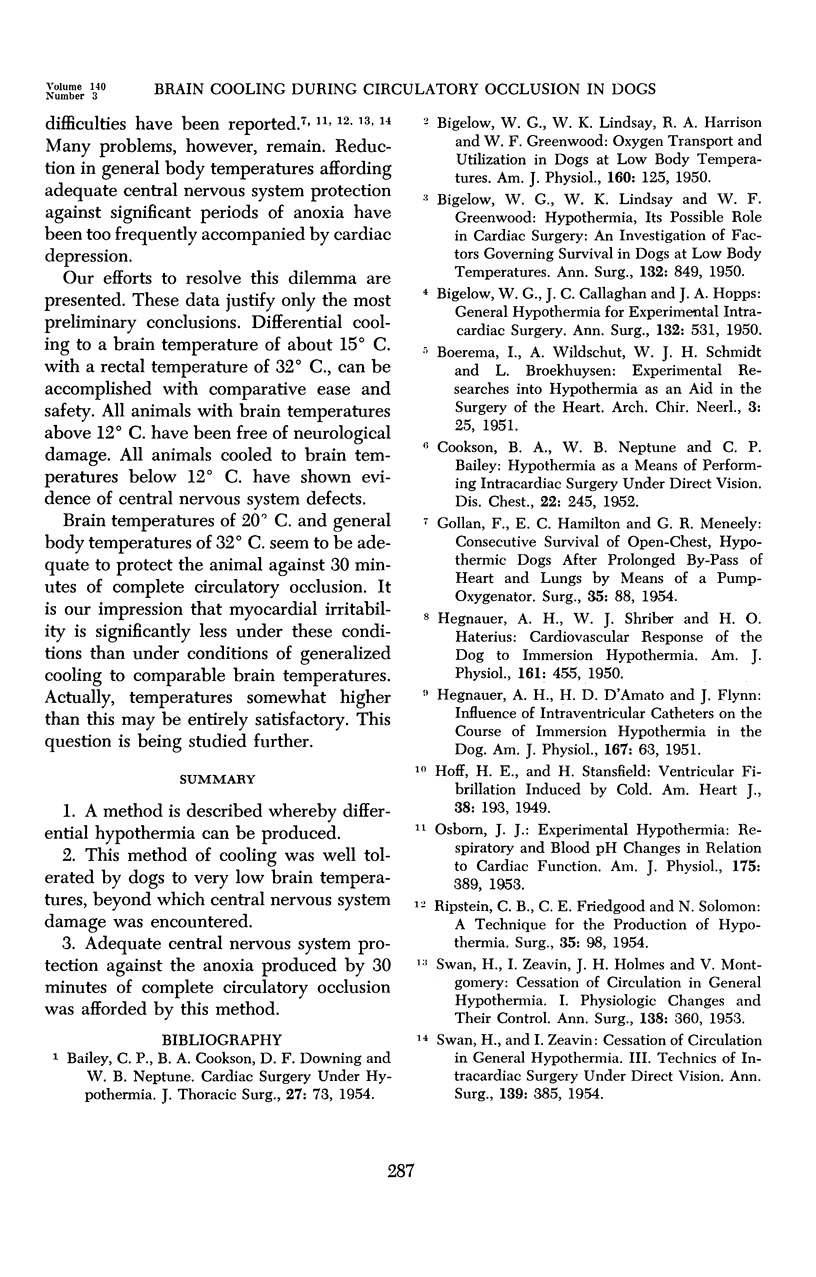Full text
PDF



Selected References
These references are in PubMed. This may not be the complete list of references from this article.
- BIGELOW W. G., CALLAGHAN J. C., HOPPS J. A. General hypothermia for experimental intracardiac surgery; the use of electrophrenic respirations, an artificial pacemaker for cardiac standstill and radio-frequency rewarming in general hypothermia. Ann Surg. 1950 Sep;132(3):531–539. doi: 10.1097/00000658-195009000-00018. [DOI] [PMC free article] [PubMed] [Google Scholar]
- BIGELOW W. G., LINDSAY W. K., GREENWOOD W. F. Hypothermia; its possible role in cardiac surgery: an investigation of factors governing survival in dogs at low body temperatures. Ann Surg. 1950 Nov;132(5):849–866. doi: 10.1097/00000658-195011000-00001. [DOI] [PMC free article] [PubMed] [Google Scholar]
- BIGELOW W. G., LINDSAY W. K. Oxygen transport and utilization in dogs at low body temperatures. Am J Physiol. 1950 Jan;160(1):125–137. doi: 10.1152/ajplegacy.1949.160.1.125. [DOI] [PubMed] [Google Scholar]
- BOEREMA I., WILDSCHUT A., SCHMIDT W. J. H., BROEKHUYSEN L. Experimental researches into hypothermia as an aid in the surgery of the heart. Arch Chir Neerl. 1951;3(1):25–34. [PubMed] [Google Scholar]
- COOKSON B. A., NEPTUNE W. B., BAILEY C. P. Hypothermia as a means of performing intracardiac surgery under direct vision. Dis Chest. 1952 Sep;22(3):245–260. doi: 10.1378/chest.22.3.245. [DOI] [PubMed] [Google Scholar]
- GOLLAN F., HAMILTON E. C., MENEELY G. R. Consecutive survival of open-chest, hypothermic dogs after prolonged by-pass of heart and lungs by means of a pump-oxygenator. Surgery. 1954 Jan;35(1):88–97. [PubMed] [Google Scholar]
- HEGNAUER A. H., D'AMATO H., FLYNN J. Influence of intraventricular catheters on course of immersion hypothermia in dog. Am J Physiol. 1951 Oct;167(1):63–68. doi: 10.1152/ajplegacy.1951.167.1.63. [DOI] [PubMed] [Google Scholar]
- HEGNAUER A. H., SHRIBER W. J., HATERIUS H. O., FLYNN J., WOLFF R. Cardiovascular response of the dog to immersion hypothermia. Am J Physiol. 1950 Jun 1;161(3):455–465. doi: 10.1152/ajplegacy.1950.161.3.455. [DOI] [PubMed] [Google Scholar]
- OSBORN J. J. Experimental hypothermia; respiratory and blood pH changes in relation to cardiac function. Am J Physiol. 1953 Dec;175(3):389–398. doi: 10.1152/ajplegacy.1953.175.3.389. [DOI] [PubMed] [Google Scholar]
- RIPSTEIN C. B., FRIEDGOOD C. E., SOLOMON N. A technique for the production of hypothermia: preliminary report. Surgery. 1954 Jan;35(1):98–103. [PubMed] [Google Scholar]
- SWAN H., ZEAVIN I. Cessation of circulation in general hypothermia. III. Technics of intracardiac surgery under direct vision. Ann Surg. 1954 Apr;139(4):385–396. doi: 10.1097/00000658-195404000-00001. [DOI] [PMC free article] [PubMed] [Google Scholar]
- SWAN H., ZEAVIN I., HOLMES J. H., MONTGOMERY V. Cessation of circulation in general hypothermia. I. Physiologic changes and their control. Ann Surg. 1953 Sep;138(3):360–376. doi: 10.1097/00000658-195313830-00009. [DOI] [PMC free article] [PubMed] [Google Scholar]


